SIGGRAPH 2010: TouchPoint: Haptic Exchange Between Digits
Chair(s):
- Richard Elaver
-
- Appalachian State University
Art Papers Chair(s):
- Lira Nikolovska
-
- Autodesk, Inc
Location:
Los Angeles, California, United States of America
Dates:
July 25 - 29, 2010
Art Show Overview:
The work exhibited in the SIGGRAPH 2010 Art Gallery investigates the polysensory nature of human experience in a technologically enhanced environment. The exhibition explores the permeable membrane of the techno-human interface, where we engage an array of tools to materialize and visualize artifacts of creative expression. Integral to the work is human haptic interaction, involving the “viewer” and/or the artist through a unique physical interface.
Our sensory systems, like the aesthetic experiences they ascertain, operate simultaneously on several channels. Touch, for example, is not a binary system, but a complex structure of multiple sensory mechanisms, synthesizing such information as pressure, temperature, hardness, vibration, and weight. This sensory amalgamation is exploratory in nature, developing haptic awareness through the active combination of kinesthetic and tactual evidence. An object brought to the hand cannot be described like the one explored by the fingers.
While the initial focus of the exhibition was on the sense of touch, the jury felt it was relevant to extend the breadth of sense experience. Therefore, the selected works include a range of sensory involvement, including scent and audio interactions. Some works are more solely focused on bodily presence, while others address the virtual hand in the machine. Overall, the multi-layered polysensory experience of the artwork has become the dynamic focus, forcing vision to share the pedestal of privilege with other sense modalities.
Richard Elaver
Juried Art Chair
Indiana University-Purdue University Fort WayneArts Director
Matthew Hollern
Guest Editor
Lira Nikolovska
Assistant Editor
Richard Buchanan
TouchPoint Gallery Chair
Richard Elaver
Project Manager
Rebecca Strzelec
Art Show Jury:
- Dan Collins
-
- Arizona State University
- David Prytherch
-
- Birmingham City University
- Richard Buchanan
-
- Case Western Reserve University
- Kevin R. Klinger
-
- Ball State University
Art Papers Jury:
- Joanna Maria Berzowska
-
- Concordia University
- Adam Finkelstein
-
- Princeton University
- Tad Hirsch
-
- University of Washington
- Mine Özkar
-
- Istanbul Technical University
- Victoria Szabo
-
- Duke University
Exhibition Artworks:
-
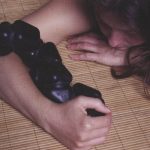
ADB
[Nicholas Stedman]
Categories: [Interactive & Monitor-Based] -
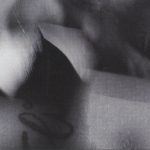
Cursor Caressor Eraser
[Michael Filimowicz]
Categories: [Installation] -
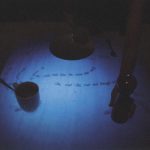
Dinner Party
[Hye Yeon Nam]
Categories: [Installation] -
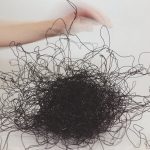
Echidna
[Tine Bech]
Categories: [Electronic/Robotic Object] [Sound Art] -
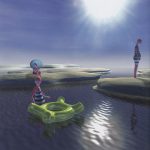
Empire of Sleep: The Beach
[Alan Price]
Categories: [Augmented Reality/Virtual Reality] -
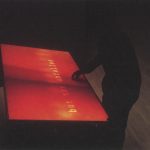
Final Wisdom I
[John Fillwalk]
Categories: [Installation] -
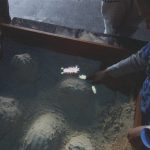
Glowing Pathfinder Bug
[Squidsoup]
Categories: [Interactive & Monitor-Based] -
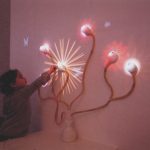
hanahanahana
[Motoshi Chikamori] [Yasuaki Kakehi]
Categories: [Installation] -

In the Line of Sight
[Daniel Sauter] [Fabian Winkler]
Categories: [Installation] -
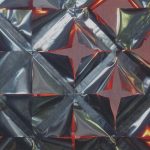
Lotus 7.0
[Daan Roosegaarde]
Categories: [Installation] -
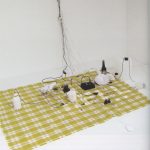
samplinglong
[Joerg Niehage]
Categories: [Installation] -
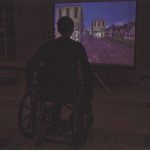
Strata-Caster
[Joseph Farbrook]
Categories: [Installation] -
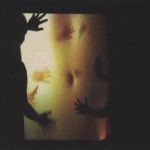
The Lightness of Your Touch
[Henry Kaufman]
Categories: [Interactive & Monitor-Based] -

Tool for Improved Social Interacting
[Lauren McCarthy]
Categories: [Interactive & Monitor-Based]
Exhibition Writings and Presentations:
-
Title:
Data Portraits
Author(s):
Category: Paper
Abstract Summary:
Data portraits depict their subjects’ accumulated data rather than their faces. They can be visualizations of discussion contributions, browsing histories, social networks, travel patterns, etc. They are subjective renderings that mediate between the artist’s vision, the subject’s self-presentation, and the audience’s interest. Designed to evocatively depict an individual, a data portrait can be a decorative object or be used as an avatar, one’s information body for an online space.
Data portraits raise questions about privacy, control, aesthetics, and social cognition. These questions become increasingly important as more of our interactions occur online, where we exist as data, not bodies.
Title: Glowing Pathfinder Bugs: A Natural Haptic 3D Interface for Interacting Intuitively with Virtual Environments
Author(s):
Category: Paper
Abstract Summary:
Glowing Pathfinder Bugs is an interactive art project primarily aimed at children and created by the digital arts group Squidsoup. It uses projection to visualize virtual bugs on a real sandpit. The bugs are aware of their surroundings and respond to its form in their vicinity. By altering the topography of the sand, participants affect the bugs’ environment in real time, facilitating direct communication between them and computer-generated creatures.
This highly malleable and tactile physical environment lets us define and carve out the landscape in which the creatures exist in real time. Thus, virtual creatures and real people coexist and communicate through a shared tactile environment. Participants can use natural modes of play, kinesthetic intelligence, and their sense of tactility to collaboratively interact with creatures inhabiting a hybrid parallel world.
This paper describes the project and analyzes how children in particular respond to the experience; it looks at the types of physical formations that tend to be built and notes how children instinctively anthropomorphize the bugs, treating projected imagery as living creatures – though with a ludic twist.
Title: Learning from Weaving for Digital Fabrication in Architecture
Author(s):
Category: Paper
Abstract Summary:
This project restructures weaving performance in architecture by analyzing the tacit knowledge of traditional weavers through perceptual study and converting it into an explicit rule in computational design. Three implementations with different materials show the advantages of using computational weaving that combines traditional principles with today’s digital (CAD/CAM) tools to develop affordable fabrication techniques.
Title: The Immediacy of the Artist's Mark in Shape Computation
Author(s):
Category: Paper
Abstract Summary:
This paper contributes to the area of computation in the production of artistic form. The author-artist describes a computational system in the form of a curvilinear, parametric shape grammar. Based on an analysis of over 3,000 entries in her traditionally hand-drawn sketchbooks, she describes the grammar that synthesizes drawings in the design language of her evolving style and serves as a tool for selfunderstanding of her artistic process.
Title: Touching Space: Using Motion Capture and Stereo Projection to Create a "Virtual Haptics" of Dance
Author(s):
Category: Paper
Abstract Summary:
This paper describes the work of a group of artists in Australia who used real-time motion capture and 3D stereo projection to create a large-scale performance environment in which dancers seemed to “touch” the volume. This project re-versions Suzanne Langer’s 1950s philosophy of dance as “virtual force” to realize the idea of a “virtual haptics” of dance that extends the dancer’s physical agency literally across and through the surrounding spatial volume. The project presents a vision of interactive dance performance that “touches” space by visualizing kinematics as intentionality and agency. In doing so, we suggest the possibility of new kinds of human-computer interfaces that emphasize touch as embodied, nuanced agency that is mediated by the subtle qualities of whole-body movement, in addition to more goal-oriented, task-based gestures such as pointing or clicking.
Title: Visual Anecdote
Author(s):
Category: Paper
Abstract Summary:
The discourse on information visualization often remains limited to the exploratory function -its potential for discovering patterns in the data. However, visual representations also have a rhetorical function: they demonstrate, persuade, and facilitate communication.
In observing how visualization is used in presentations and discussions, I often notice the use of what could be called “visual anecdotes.” Small narratives are tied to individual data points in the visualization, giving human context to the data and rooting the abstract representation in personal experience. This paper argues that these narratives are more than just illustrations of the dataset; they constitute a central epistemological element of the visualization. By considering these narrative elements as parts of the visualization, its design and knowledge organization appear in a different light.
This paper investigates how the “story” of data representation is delivered. By means of ethnographic interviews and observations, the author highlights the different aspects of the visual anecdote, a specific point where the exploratory and the rhetorical functions of visualization meet.




